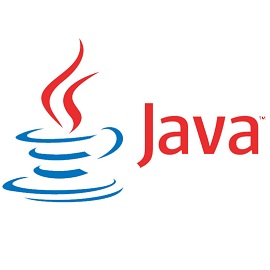
Sun Microsystems released the first public implementation as Java 1.0 in 1995.It promised "Write Once, Run Anywhere" (WORA), providing no-cost run-times on popular platforms. Fairly secure and featuring configurable security, it allowed network- and file-access restrictions. Major web browsers soon incorporated the ability to run Java applets within web pages, and Java quickly became popular. The Java 1.0 compiler was re-written in Java by Arthur van Hoff to comply strictly with the Java 1.0 language specification. With the advent of Java 2 (released initially as J2SE 1.2 in December 1998 – 1999), new versions had multiple configurations built for different types of platforms. J2EE included technologies and APIs for enterprise applications typically run in server environments, while J2ME featured APIs optimized for mobile applications. The desktop version was renamed J2SE. In 2006, for marketing purposes, Sun renamed new J2 versions as Java EE, Java ME, and Java SE, respectively.
Online Core Java Tutorial for beginners to learn the basic concepts of Core Java. Here you will learn the fundamentals of Core Java (Class, Interface etc.). These sections also contain cheatsheet for a quick review of what you have learned in a given topic.
Microsoft markets at least a dozen different editions of Microsoft SQL Server, aimed at different audiences and for workloads ranging from small single-machine applications to large Internet-facing applications with many concurrent users.
History"The history of Java Programming language begins with the first product – in December 1998 – 1999- and extends to the current day."
Great AchievementMock Tests & Assignments
Each Module will be followed by objective mockup tests and practical assignments which help you to monitor your learning progress and Evaluate yourself.
Support Any Device such as Desktop,Laptop,Mobile, on Any DeviceYou get 365 days access to the Learning Management System (LMS). This includes video, course material, exercise files and ppts used during the session.
24x7 SupportCustomer is responsible for paying all Federal, State and Local Taxes.
ContentE-Learning Center does not guarantee the accuracy of the content. E-Learning Center is not responsible for any issues that may arise as a result of information that is received from our courses.
Payment TermsIf we discover an error in the price of courses purchased, we will inform you as soon as possible (e.g. prior to the course being assigned). We will provide you the option of reconfirming your order at the correct price or cancelling it. If we are unable to contact you we will treat the order as cancelled. If you choose to cancel and have already paid for the goods you will receive a full refund.
Kindly do not share your Credit/Debit card details to anyone.
For direct cash transfer, only use our bank account name (payable to Indeed Prime ShinePrivate Limited). Do not transfer cash to any other account.